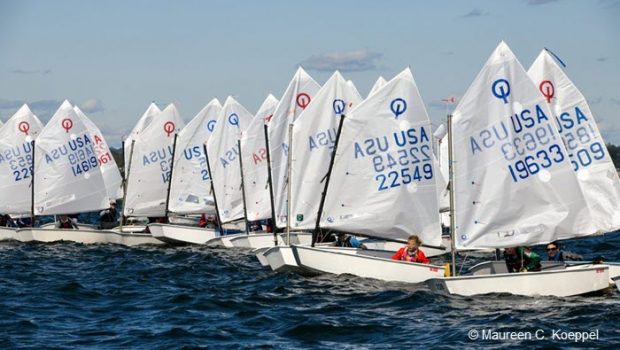Keep it fun, friendly, and inclusive
Published on August 3rd, 2022
The differences between male and female extends well beyond appearance, and while making generalities comes with risk, it is recognized that treating both genders the same for a desired outcome also comes with risk. John Hammel shares his observations:
A generation ago, I noticed that locally in Long Island Sound, there was about a 50/50 male/female split among Optimist sailors, but at national events and qualifier events like team trials, that number dropped to 70/30 or less.
Successful Opti racing requires mastery of several complex maneuvers on a 100 boat line, such as staying in place for two minutes or more, doing two quick tacks to climb to a clearer lane if someone steals your hole, figuring out the line sag (or bulge if the current is pushing you over the line) and, truth be told, how to hide your sail number to stay front row if the Race Committee lets the race go despite a bulge.
Coaches and parents would often press their sailors to be “more aggressive” at the start, but a friend noted that girls tend to master technique before barging ahead, an approach which can be ultimately more successful (also in ski racing) but demoralizing on a busy start line where there may be aggressive boys without the skills banging around with those who have honed their techniques (please pardon the gross generalizations). Furthermore, there were very few start line protests to deter the rule breaking and contact.
With the help of others, I pushed for the addition of the first Optimist US Girls Nationals, held the day before the open event, and it was popular in part because there was less unskilled banging around at the start (or for that matter, mark roundings), less yelling, and the opportunity for the girls to meet others like them from all over the country, so important at that age.
I did the same on Long Island Sound with a two-day clinic/regatta at Noroton Yacht Club, with top college-age young women coaches to serve as role models. We timed it to follow the New England Championships and attracted female sailors from the entire east coast and beyond who found the regatta to be less stressful and more fun.
One thing I realized after starting a regional Opti training group called LISOT was that success on the race course didn’t require pedigree racing genes or the latest equipment, but did reflect interest in mastering skills and time on the water. For that to occur, it had to be fun, friendly, inclusive (no “cuts”), focus on skills development, and adventurous sailing venues.
To help it stay fun, it’s important to limit the length of practices (and regattas for that matter), and work hard on retention to avoid demoralization and dropping out which seems to happen more with girls than boys.









 We’ll keep your information safe.
We’ll keep your information safe.